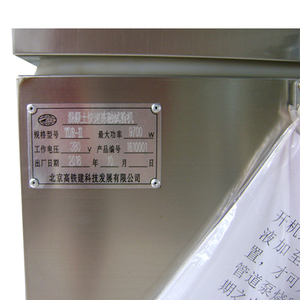Introduction to Freeze Thaw Testing
Freeze thaw testing is a critical evaluation method for materials, primarily used in construction and material science. This process assesses a material's durability and performance under cyclical freezing and thawing conditions. It simulates environmental factors that can cause deterioration, ultimately helping manufacturers and builders ensure the longevity and reliability of their products. Understanding how materials respond to these stressors is essential for applications ranging from concrete in pavements to asphalt in surface coats.
Types of Freeze Thaw Testing
There are various methods employed in freeze thaw testing, each designed to simulate specific environmental conditions. The commonly used types include:
- Laboratory Freeze Thaw Cycles: In controlled settings, samples are subjected to repeated freezing and thawing cycles while monitored for visual evaluation and strength measurements.
- Field Testing: This method involves the in-situ assessment of materials to understand their performance under real-world conditions, often leading to more accurate predictive results.
- Accelerated Freeze Thaw Testing: This variation speeds up the testing process by using extreme conditions to simulate prolonged exposure, allowing for quicker results.
- Dynamic Freeze Thaw Testing: This test measures the changes in stiffness and acoustic properties as the material goes through freeze thaw cycles, providing valuable insights into durability.
Applications of Freeze Thaw Testing
Freeze thaw testing is widely utilized across various industries to ensure material reliability and safety. Key applications include:
- Construction: Used to evaluate concrete, asphalt, and masonry products to prevent cracking and structural failure in cold climates.
- Infrastructure Projects: Critical for assessing the longevity of pavements, bridges, and roadways, particularly in areas subject to harsh weather conditions.
- Material Development: Assists in the development of new composites and aggregates by gauging their performance against freeze thaw cycles.
- Maintenance and Quality Assurance: Aids in guaranteeing that existing structures meet safety regulations and performance standards.
Advantages of Freeze Thaw Testing
Implementing freeze thaw testing provides numerous benefits that help enhance material resilience. Some of the key advantages include:
- Predictive Analysis: It allows for early detection of potential failures, enabling proactive measures to enhance material formulations.
- Quality Control: Assures that materials used in construction meet standards before installation, ensuring public safety and reducing long-term maintenance costs.
- Performance Benchmarking: Facilitates the comparison of various materials under identical testing conditions, helping manufacturers refine product development.
- Cost-Effective Solutions: Identifying weak materials upfront helps prevent costly repairs and replacements later on, saving both time and resources.











































































































































































